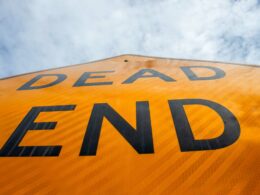In the early 2000s, Jesse Garrett created the “5 planes of UX.” Simple to understand and extremely visual, it perfectly illustrates the development process of any system and helps determine the exact needs of your users. But how can you use this in your work as a designer in a professional UI design company? Let’s find out.
Using 5 Planes of UX/UI
This model contains particular elements. Let’s have a look at them.
Garrett Chart
This model became the basis for the diagram. Using this, Garrett was able to show the relationship between different approaches to design within the framework of user experience and design. Moving from the abstract to the concrete and from concept to implementation, Garrett identified five planes. Each plane depends on the purpose of the system – to focus on action or provide information – the main tasks can be described in different ways. But the general, overall meaning does not change.
Now let’s see how all this can be used to create understandable and convenient systems and interfaces. And, how to test your ideas and hypotheses during the development process, when there is still the opportunity to quickly and cheaply fix errors.
#1 Strategy Level
The most abstract and conceptual level. We describe the reasons and goals for creating the product, studying the audience, and making assumptions. We find out how useful the product will be and what tasks users can solve, thanks to it.
A product can be anything: a new site, application, information, navigation system, or interface.
We answer the following questions:
- Why do we create a product?
- What are our goals?
- Who are our users? Who are we making the product for?
- What tasks will we help users solve?
- Why will they use our solution?
Finding answers to these questions is part of a comprehensive process of strategic research and planning. It’s important to interview users, owners, and product development teams. Already at this level, we can test the idea and conduct a series of studies.
#2 Feature Level
Enumeration of all project functions and content requirements. Descriptions of the functionality features and requirements that are necessary to achieve strategic goals.
We answer the following questions:
- What functions are needed to solve custom tasks?
- What functionalities do competitors offer?
- What content do users need?
Our task is to determine all the possibilities for solving the tasks of users and meet their needs. We can check how relevant and irrelevant the selected functions are and what type of functionality is more useful in the eyes of users.
#3 Structure Level
Study of user experience with the product, information, architecture development, and user experience design.
We answer the following questions:
- How to help the user solve the problem in the minimum amount of time and the smallest number of steps?
- Is the architecture of the project understood by users?
- Does the design meet user expectations?
- Is it possible to painlessly change the architecture if necessary?
The main task is to create an architecture that meets the expectations of users and, at the same time, really helps to solve user problems.
#4 Layout Level
Creating prototypes based on information obtained during the passage of previous planes. The transition from an abstract vision of a product to its concrete embodiment.
We answer the following questions:
- Does the prototype meet the required functionality and information architecture requirements?
- Are content blocks conveniently located?
- Is the system convenient for users?
- Do the prototypes meet industry requirements and standards?
- Is this the best solution, or is it possible to optimize and improve something?
The list is far from complete. The main task of this stage is to bring work of previous planes into a common system. You need to check how the result meets the expectations of users, owners, and developers of the product.
#5 Surface Level
The final level is the visual design of the prototype: design, typography, layout. At this level, all abstraction is concretized at the level of the finished product.
In the course of working on the visual component, we ask ourselves many questions, among which the most significant are:
- Is our interface user-friendly?
- Does it solve the problems described in the first planes?
- Does it correspond to the functions that should be incorporated into it?
- Does the design help the user?
- Does the visual design solve the problems that were laid down in the design of the user experience?
At the surface level, all tasks that were not solved in the previous stages are solved. Comprehensive tests are conducted to test how the result meets the needs and expectations of your users.
The result of work at this level is a product completely ready for further work: an interface, website, application, web service, or any other system.
Final Thoughts
Five planes of UX/UI is the model that certainly helps you deliver value for money and better satisfy the users’ needs. However, it is just the beginning. After the release of the product and receiving feedback from real customers, the next stage begins – refinement and optimization of the project.
This article originally appeared in Symbian One. Photo by George Kedenburg III on Unsplash.












